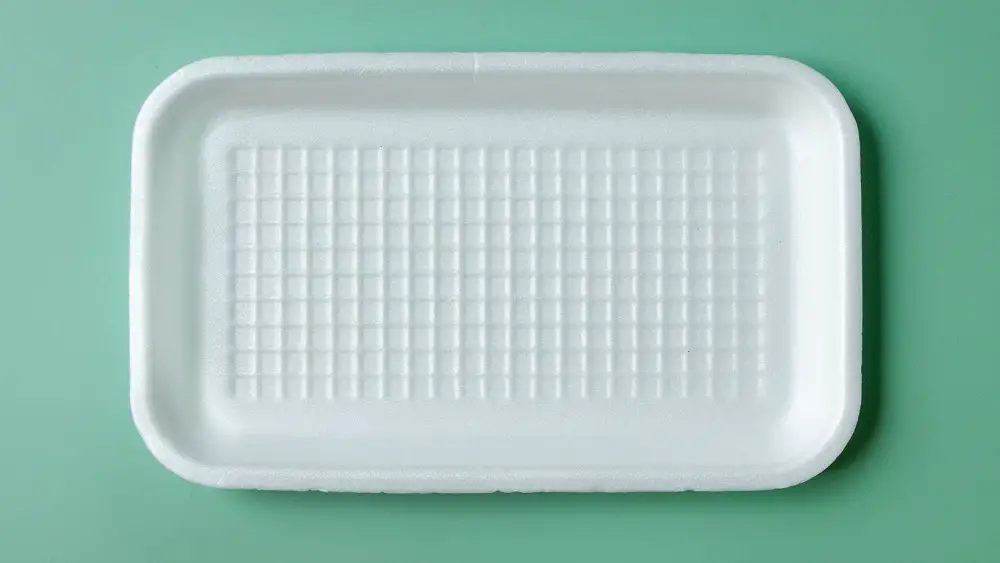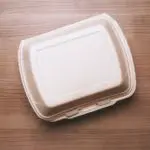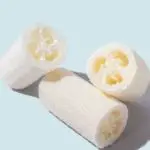Styrofoam, also known by the name polystyrene, is one of the worlds most widely used packaging materials.
You’ll find it in cardboard boxes everywhere things are delivered – the chances are always pretty good when you buy almost any new product, that there’ll be styrofoam somewhere in the packaging.
Perhaps you’ve always wondered just how styrofoam gets made, from the raw material to finding its way into the packaging of nearly every new product that you buy?
Don’t worry – here’s a quick guide that’ll help you understand everything you wanted to know about styrofoam!
What Is Styrofoam
Styrofoam, or polystyrene, is a lightweight, waterproof packaging material made from a chemical called styrene. It has many properties that make it a great packaging material.
Being lightweight, it doesn’t add a lot of weight to the packaging of an item – while providing lots of protection from bumps and drops.
Both of these qualities make it ideal for manufacturers to use in order to protect their goods, while not having to spend excessively on delivery costs!
Styrofoam being waterproof is also another obvious advantage as a packing item – it won’t absorb water, but will instead let it run off, reducing the risk of mold growing when the package is placed in a humid environment.
However, polystyrene products are far harder to dispose of safely than other packaging products, such as cardboard or paper – which are far easier to recycle.
Also, styrofoam is often molded to specific shapes – often, to the exact contours of a product – which can further make re-usability or recycling difficult, if not impossible.
What Is Styrofoam Used For?
Styrofoam is used for packing everything from kids toys, mobile phones, television sets, computers, all the way to large industrial products. It is truly ubiquitous – you’ll find it surrounding products all across the world.
For instance, if you’ve bought any electronic goods recently, chances are good that styrofoam was a big part of the packaging.
With some small tweaks in the manufacturing process, related products can also be made – for example, panels for home insulation!
Much smaller foam boards are also used by hobbyists for model making and craft – styrofoam doesn’t require much work to cut and shape, and can be either cut with a knife, or sliced easily with an inexpensive hot wire cutter.
So, it’s not just large companies that make use of styrofoam – aside from its obvious use in packaging, there are lots of uses of styrofoam and related products that might surprise you!
Manufacturing Process
Styrofoam isn’t particularly difficult to make, but it does require specialized equipment and preparation to make.
This isn’t something you’ll ever have to worry about making at home, however! It’s a detailed chemical process, but we’ll explain it in relatively simple terms for you!
Polymerization
First of all – what type of material is styrofoam?
Well, it’s a plastic, made from a chemical called styrene. However, you might be thinking – isn’t plastic a hard material? Well, the answer is not necessarily! As you know, styrofoam is actually pretty soft and lightweight.
Going deeper, we can find out that styrofoam is made from a specific type of plastic called a polymer. That might sound like a complex word, but don’t worry – we’ll keep it simple for you!
A polymer is basically a molecule that likes to join with other molecules of the same substance, in long chains. Polymerization is a process by which chemicals called monomers (”mono” meaning “one”, as opposed to “poly”, meaning “many”) are chemically altered in a reaction, in order to make different useful substances!
Turning pellets into packaging
The long and short of it is that the polymerization process gives us these tiny little plastic pellets, each of them just a few millimeters across.
However, while that might be chemically what we need for making styrofoam packaging, it’s not physically the same – a load of loose plastic pellets isn’t exactly an ideal packaging material.
Not to mention that styrofoam is actually close to 97% air – which makes it much lighter and softer!
To get closer to the styrofoam packaging that we all know, a few more things have to be done to these little plastic pellets. The pellets have to be made bigger and softer! How do we do that?
The process is called expansion, and it’s actually a relatively simple one! Hot air or steam is applied to the pellets – typically, by using a huge boiler to expand giant bags of these pellets at a time.
This reduces their density massively – down to 3% of their original density! Obviously, with this decrease in density comes an according increase in size – so a relatively small amount of these plastic pellets can make a lot of styrofoam!
Molding

That’s all well and good – but these plastic pellets still haven’t started to resemble the styrofoam packaging material that you’re so familiar with!
We’re just one step away from that stage, so don’t worry! The very next thing to do with these expanded plastic pellets is to mold them into shape.
You’ve noticed how styrofoam packaging often fits perfectly around the product that it protects, right? That’s one of the advantages of styrofoam – how easy it is to mold and shape!
Typically, a manufacturer will pump a load of these plastic pellets into a very hot mold of the exact shape needed. With careful design and manufacture, this mold will turn the styrofoam pellets into a perfectly shaped protective covering for the product.
It’s the ability to be molded so readily that is one of the key reasons why polystyrene-based packaging has become so ubiquitous – it can be made into any shape that a mold can be built for!
This makes it easier to make it conform exactly to the shape of a product than other, more biodegradable products, such as recycled paper.
Conclusion
Styrofoam is used in packaging everywhere – from the smallest items to the largest industrial gear. It’s the most widely packaging material in the world – and a large part of its widespread use must surely be due to how easy it is to make and shape to fit products exactly, while protecting them from bumps and bangs!







